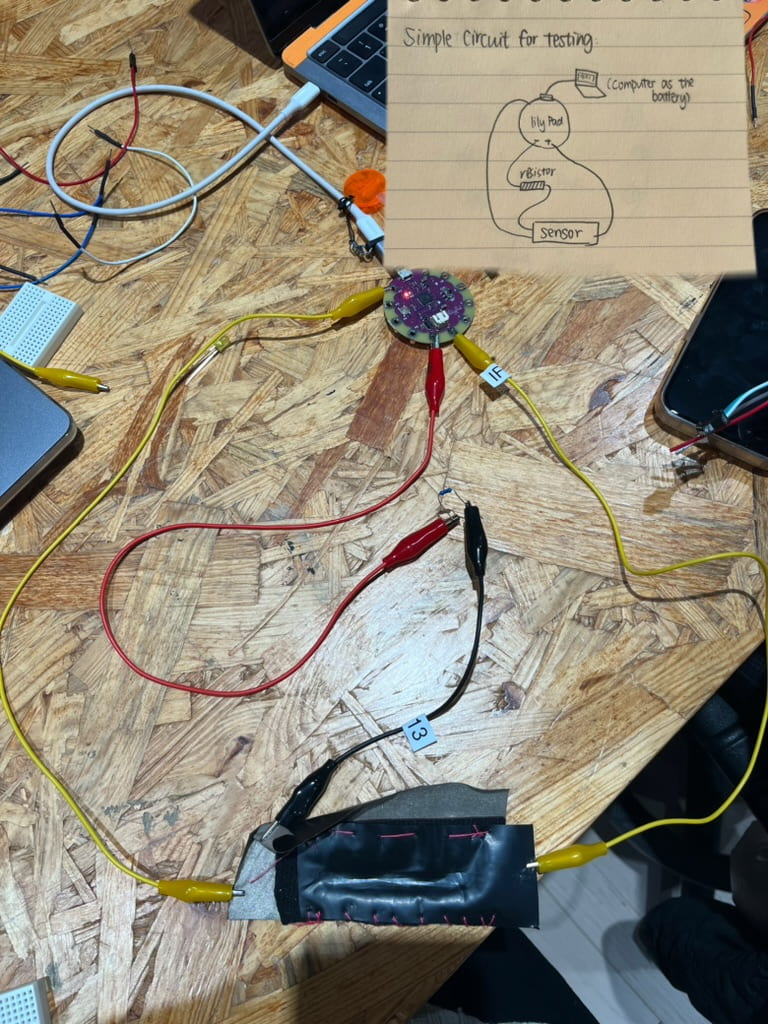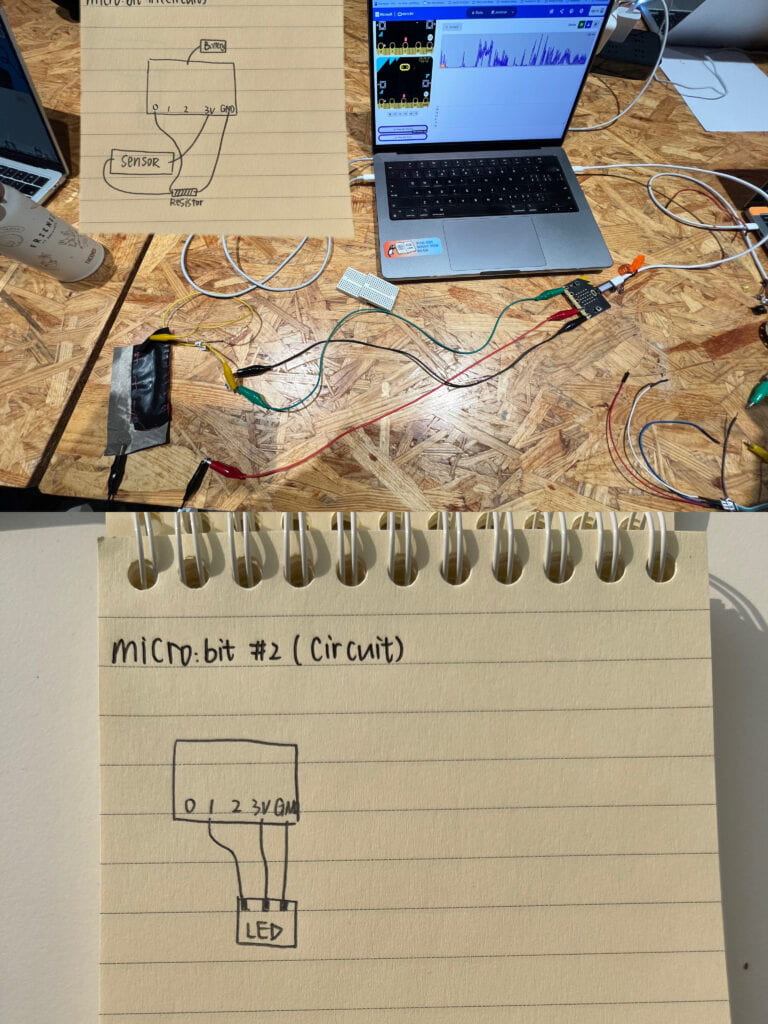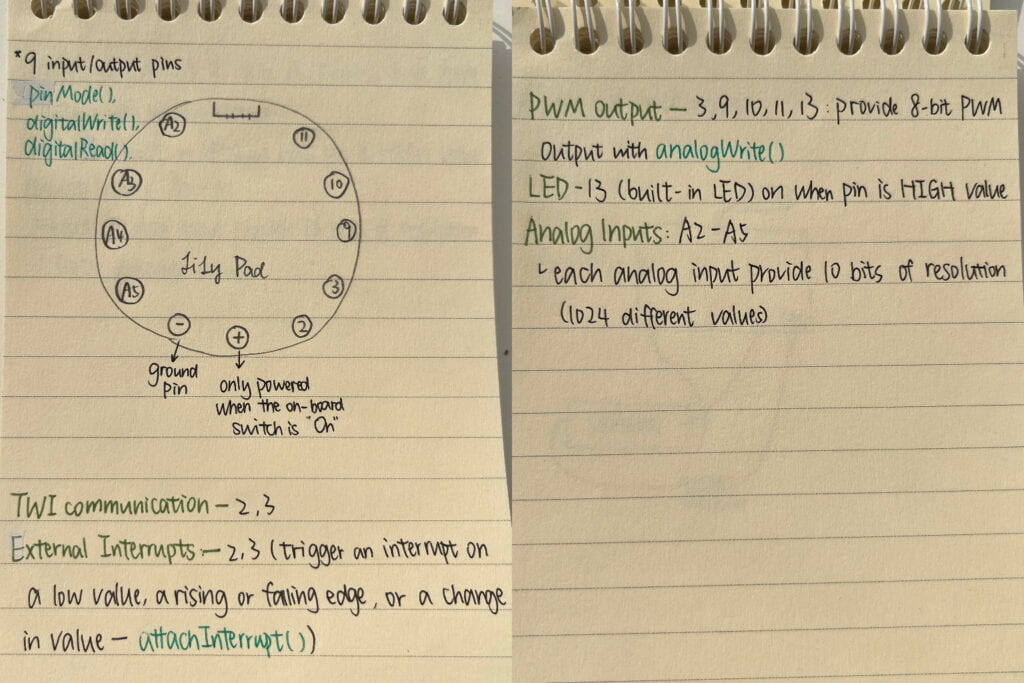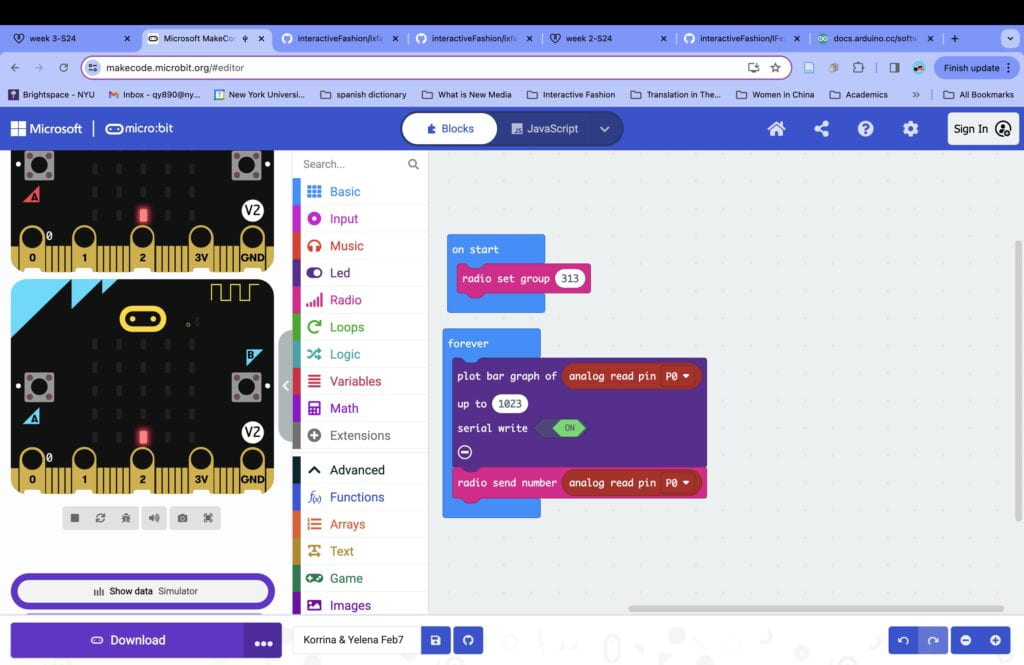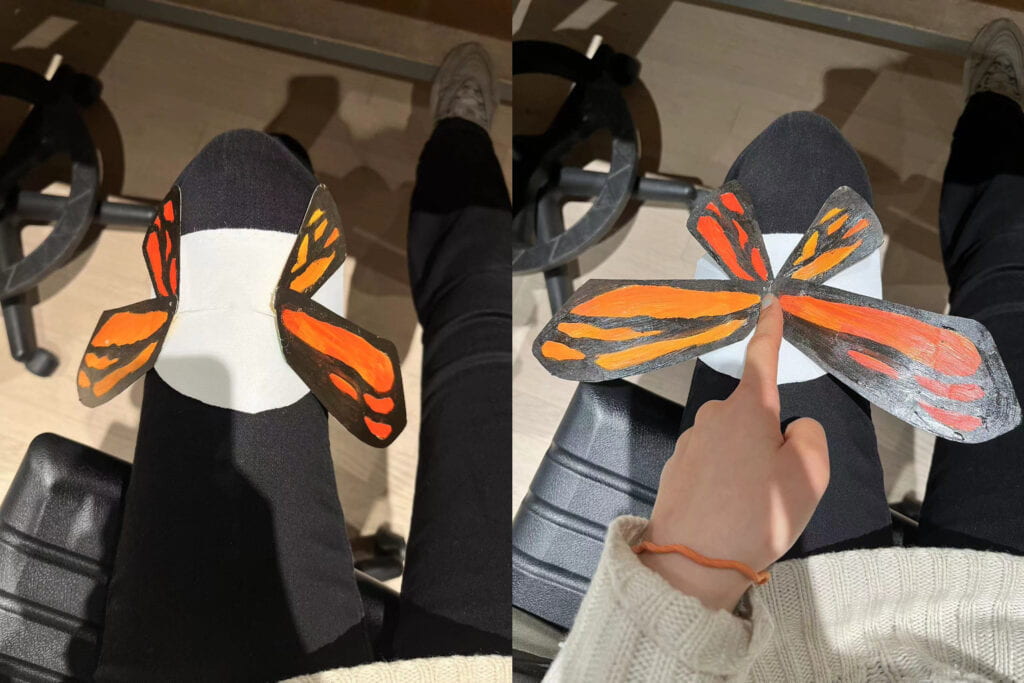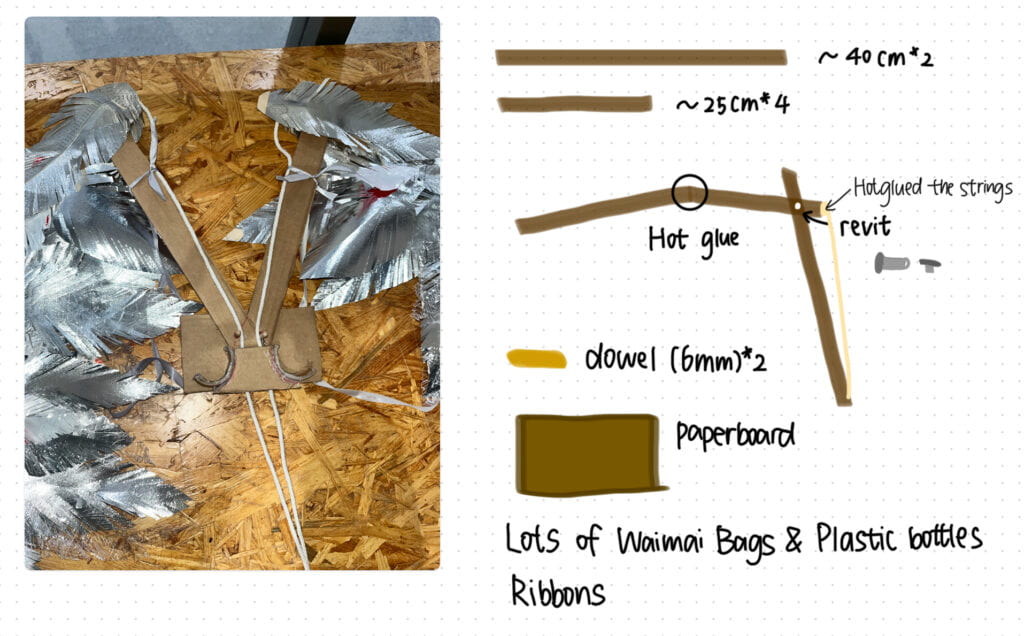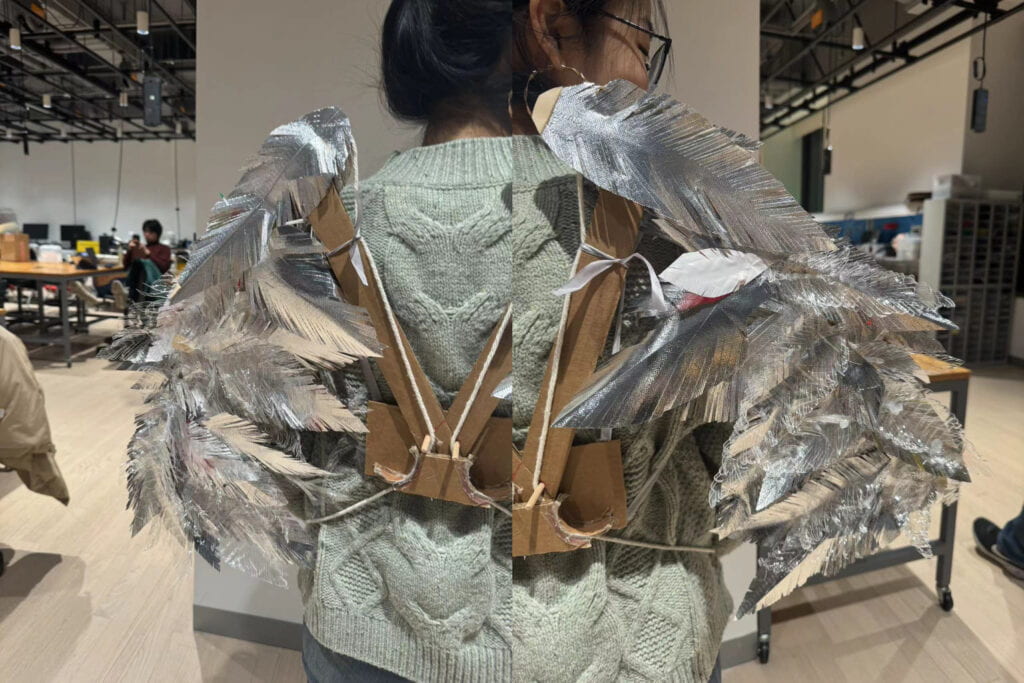Mask
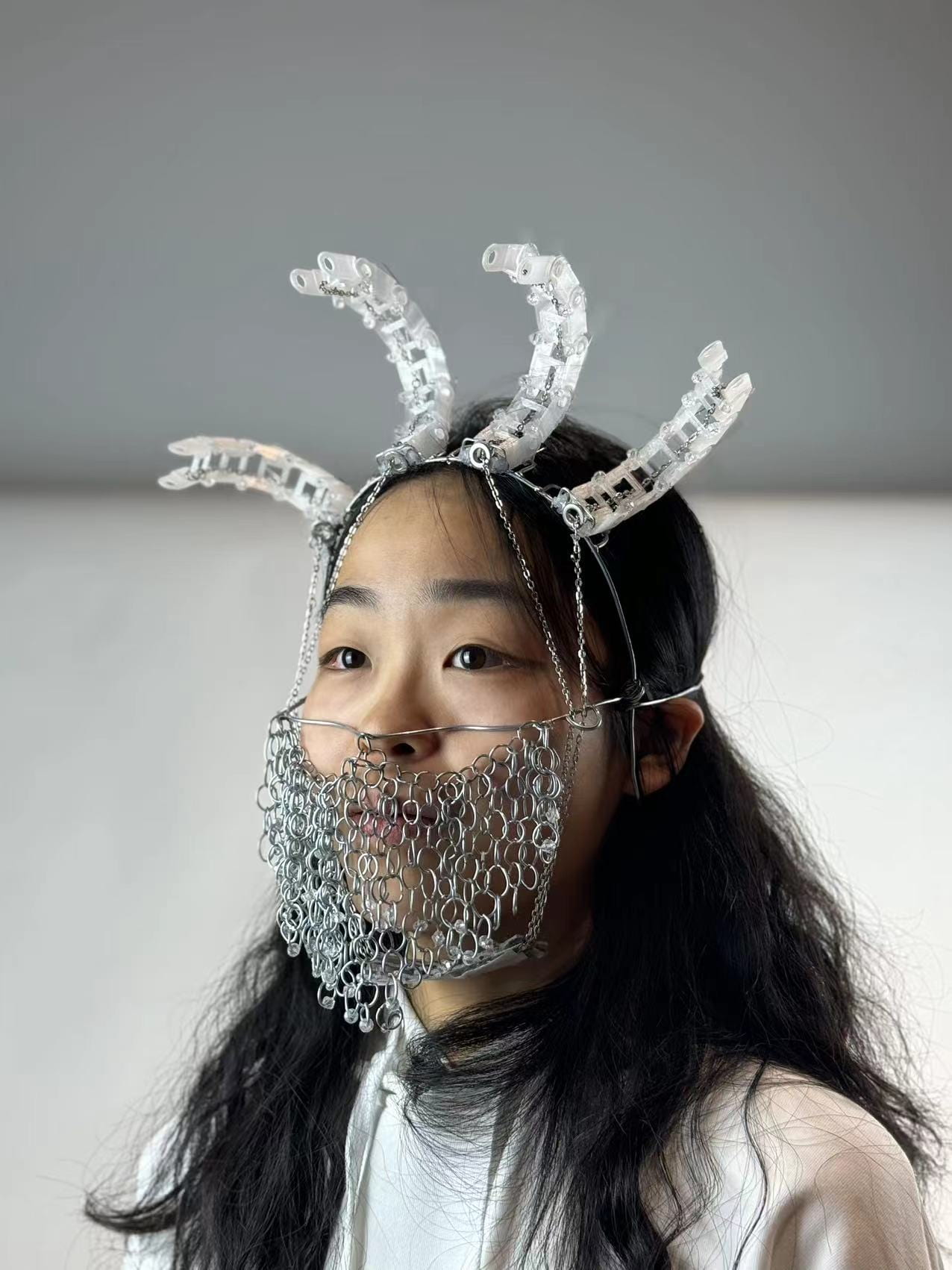
Idea/ Concept
The mask gives observers a majestic sense by just observing whoever is wearing it. The observers might think the wearer is pretty and easy to mess up with. However, when the wearer opens her/ his mouth and starts to talk, the spikes on the top of her/ his head go up. The spikes consist of both 3D printed PLA units and needles, which eventually make the spike relatively dangerous. This piece helps the wearer to express herself/ himself through opening the mouth.
inspirations: @aerarius_metalworks | pearls/ chains | link 1 | link 2
Technical development
- I learned how to solder when dealing with the wires. We couldn’t find the soldering wires, so using another type of wire was a bit hard (although since I haven’t tried with soldering wire, I couldn’t tell the differences :P). I need to melt some solder so that the two wires can be connected together. It is a bit hard to do when the touching surface is small, but once everything is in good position/ condition, the two wires can be connected easily.
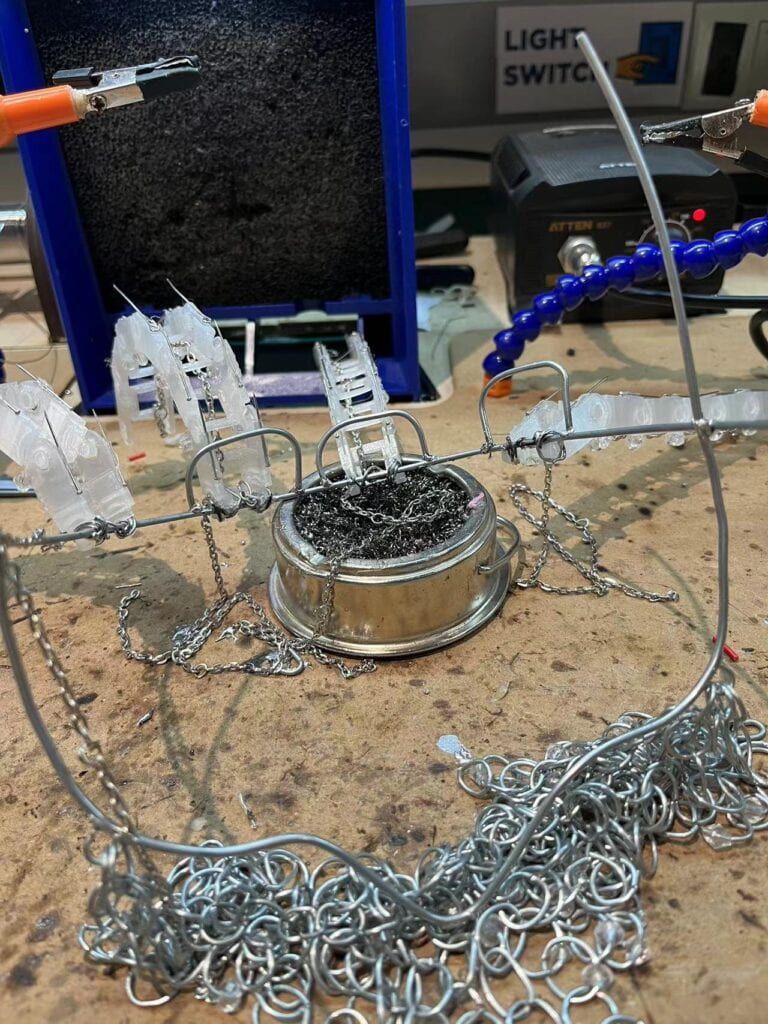
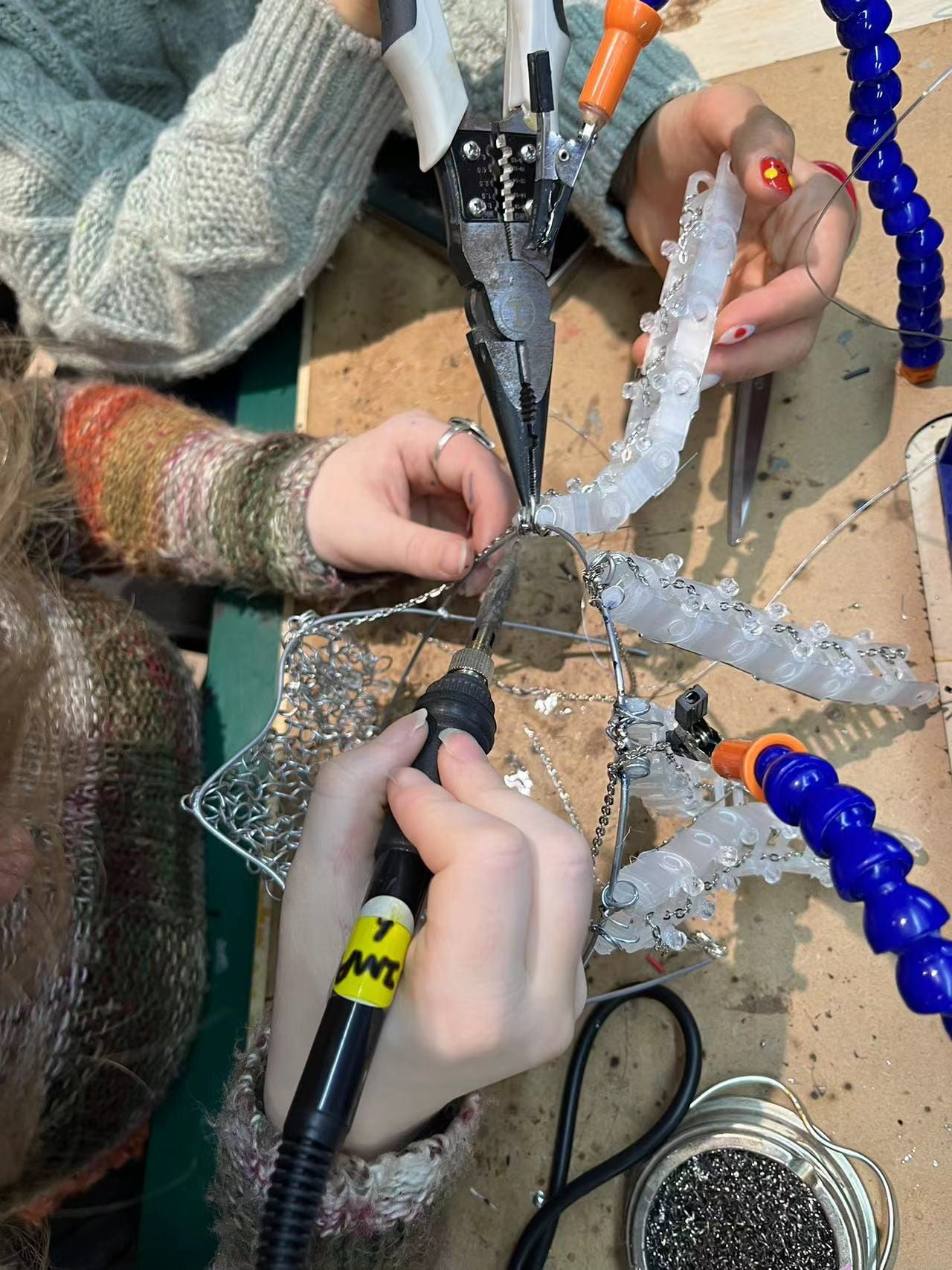
- I got more familiar with the combination plier. Because the plier has a relatively big head, it was easier to use it to make the rings for the mask.
- 3D printing. Although I downloaded the model online, I experimented a bit with the printing. The spaghetti failure appeared several times. Now that we don’t use glues on the plate, it’s important to create brims for the models before printing them out.
- I failed to figure out how the spikes work, so after observing what Korrina made, I drew something down. We need to get the chain through the holes alternatively, so that the spike can be pulled up.
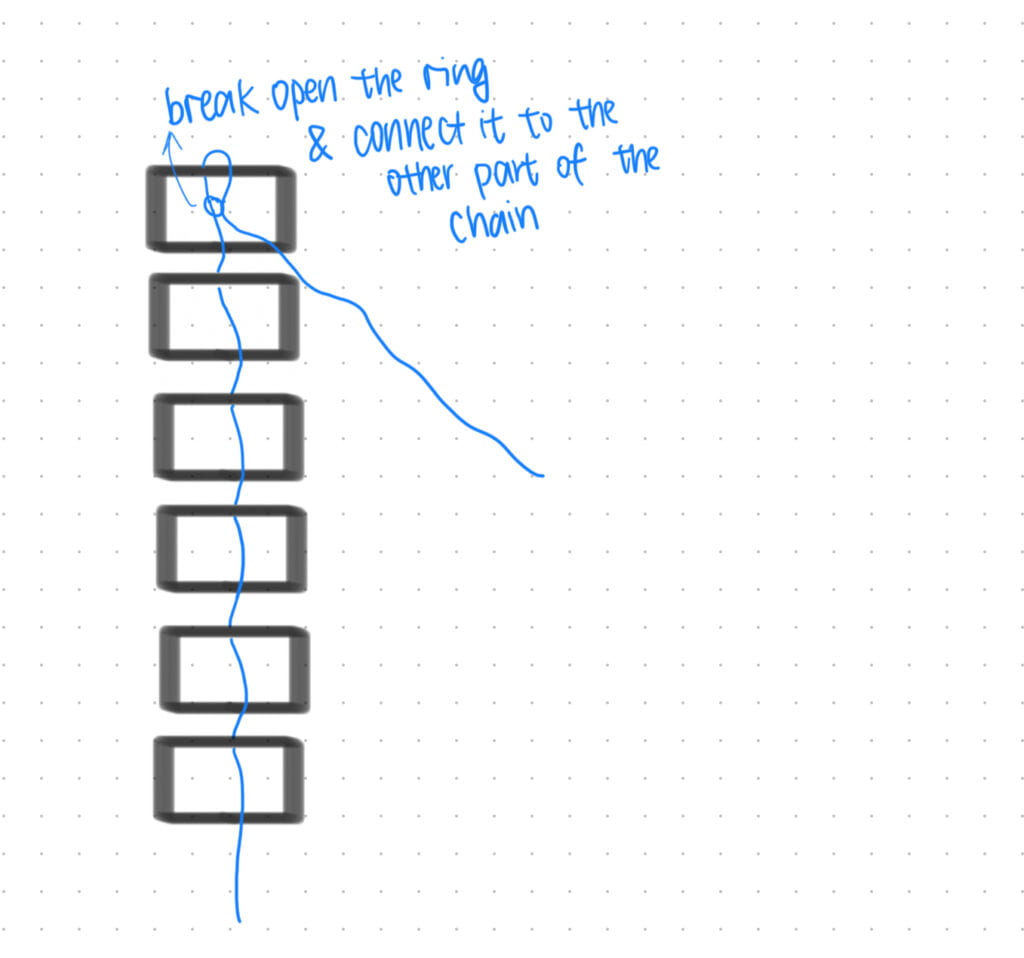
- When creating the wire frame, Korrina and I put down its outline on a piece of paper after adjusting it on my face. But I am guessing, next time when making a shape with the wire, we can draw the shapes on paper first, and make the shape according to what we’ve drawn (if we know the measures). It’s kind of similar to the idea that create a (paper) model first, then operate with the wires (so that we don’t operate in the air).
Future improvements
- The chains are a bit too hard, so the mechanics may not be working well. We should have used wool/ fabrics. (But the problem with these soft materials is that they don’t fit the theme/ color.)
Reading/ viewing Reflections
“We never look at just one thing; we are always looking at the relation between things and ourselves. Our vision is continually active, continually moving, continually holding things in a circle around itself, constituting what is present to us as we are.”
- I found this quote while I was reading for another course, from Ways of Seeing. I think it poetically portrays how our visual senses work. But in addition to only perceive the relations by “looking”, we also integrate other senses when we interact with the environment around us.
💬 How fashion/ dress articulate group identities?
Paris is Burning and the readings reminds me of a phenomenon in China called Shamate 杀马特. People in the Shamate community wear unique, eye-catchy hairstyles and clothes. Their showy hair, especially the long bangs covering their forehead is their signature. The similarities between them and those characters in Paris is Burning are: 1) people of both communities are in a marginalized position. In Shamate’s case, the community is usually composed of the second generation of migrant workers or migrant factory workers. They use this way to confront the hardships in their life. In Paris is Burning’s case, these black, queer people are trying to find their agency in the white dominated society, although some of them joined houses still run by the white. 2) Both communities use clothes, hairstyles, makeup and fashion elements to express themselves. However, while most people in Paris is Burning feel comfortable expressing themselves in that way, the Shamate group faced explicit criticism and mocking, and eventually, most of them yielded to reality and went back to the mundane factory work. I think both phenomena, along with our readings, point out how marginalized groups are seeking ways to be seen, seeking ways to find their space in society. They use appearance as the media to challenge and confront the long-established social structure because “we look to read the other through appearance and hope we can do so accurately” (142). Fashion is their way of gaining agency in this world.
What is really valuable, and unique in these cases is that these fashions are created and demonstrated by the group. They are not wearing clothes, hairstyles, or makeup designed by others who don’t even belong to the group. There is criticism of the movie in that it was made by a white person. After gaining all the fames, reputations and rewards from the movie, little attention is paid to the status quo of the communities in the film. I do agree with this criticism.
Another question that’s been hunting me: How do we perform a certain gender? How do we perform our gender and sexuality? If I were biologically a man, but I recognized myself as a woman, is changing my appearance so that I can fit in the societal perception of woman appearance an effective way to express my sexuality? Doesn’t it reinforce certain gender stereotypes?
